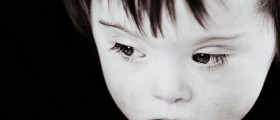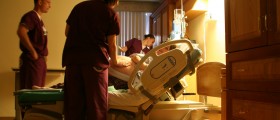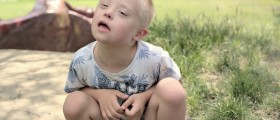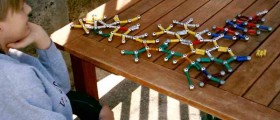Down syndrome, also known as trisomy 21, is a serious genetic disorder in which all the symptoms and signs develop due to the presence of an extra chromosome 21. Humans normally have 23 pairs of chromosomes, out of which one pair of sex chromosomes (XX in women and XY in men).
However, in people suffering from Down syndrome, there is one more chromosome 21 that is not supposed to be present in the body. Apart from Down syndrome in which an extra chromosome is found in all cells, there are a few more types like translocation or mosaicism, where only some cells contain the extra chromosome.

Down Syndrome and Low Muscle Tone
Because of an extra chromosome, individuals suffering from Down syndrome have to face many health obstacles. Apart from the fact that such people actually look different, have many distinctive features and there is a certain level of mental retardation, individuals suffering from Down syndrome are also prone to many different health conditions. One of the major problems of the disorder is the low muscle tone present a birth. Hypotonic (low muscle tone) is one of the distinguishing characteristics of Down syndrome and it affects each and every child born with Down syndrome.
It is estimated that there are between 656 and 850 muscles in the human body. In the case of people with Down syndrome, most of them are hypotonic. This is the reason why many children face problems when it comes to adopting certain movements and learning how to crawl or walk. Compared to their peers Down syndrome children have difficulty and generally reach developmental milestones much later.
- Over an 18-month period, 503 children with DS were examined (56% male). The median age was 8.1 years (0.6-19.2). Pes planus was almost universal, occurring in 91% of the cohort.
- A range of other musculoskeletal anomalies were observed, with inflammatory arthritis (7%) and scoliosis (4.8%) occurring most frequently after pes planus. Delay in ambulation was common; the median age to walk was 28 months (12-84).
- Children with DS are at increased risk of a number of potentially debilitating musculoskeletal problems.
- These conditions can present in variable manners or be completely asymptomatic. Pes planus is common; therefore, early consideration of orthotics and lifelong appropriate supportive footwear should be considered. Delayed ambulation is frequently noted.
- A significant proportion of children with DS have arthritis; however, despite a high prevalence, it is often missed, leading to delayed diagnosis.
So, all the activities which require the use of specific muscles like rolling over, sitting without being propped, crawling, pulling to a stand, walking, running, jumping, and many more are eventually learned but with quite an effort. Because of that parents of children with Down syndrome are due to cooperate with a well-experienced physical therapist from the moment their babies are born. This professional will help the child to deal with gross motor skills.
Additional Problems regarding Low Muscle Tone
Apart from problems with gross motor skills, Down syndrome people also have difficulty when it comes to fine motor skills. For, instance we all know that our hands comprise many muscles and that all of these get engaged when manipulating small and delicate objects. Fine motor skills may be another challenge for children with Down syndrome. This issue can be brought under control with occupational therapy.
Also, there may be difficulty learning to talk. This is explained by the fact that the tongue in people suffering from Down syndrome is a bit larger and is also hypotonic, moving slowly inside the oral cavity. So, speech therapy is another treatment option such children can benefit from.
All in all, hypotonia is blamed for many difficulties these individuals face while growing and developing. Fortunately, most of these issues are successfully dealt with with suitable treatments and plenty of patience, love, and care obtained from parents.

















Your thoughts on this
Loading...